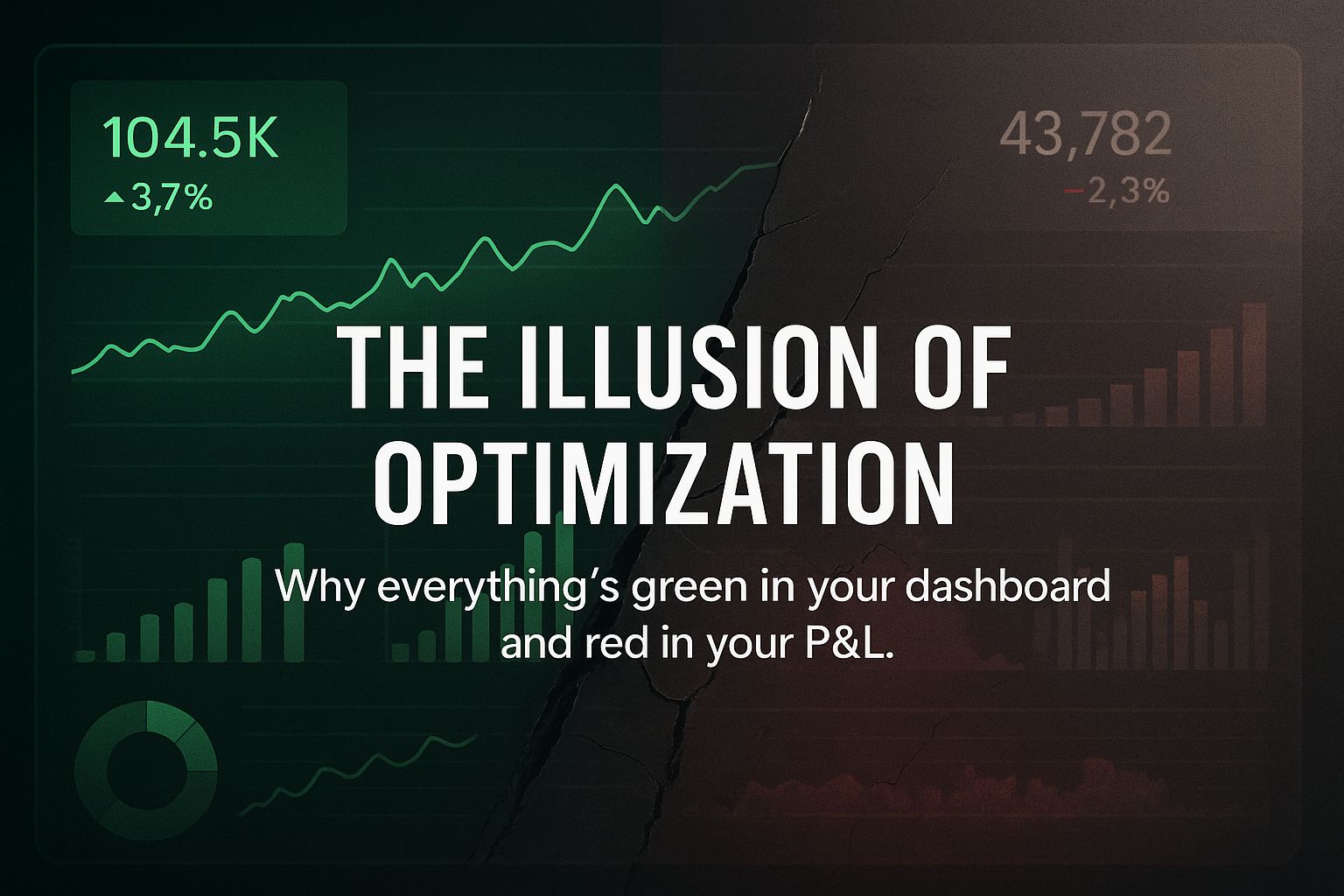
Every marketer thinks they’re optimizing.
Dashboards up. CPAs down. Graphs are glowing green. You screenshot it for the team Slack and drop a 👏 emoji.
But zoom out and revenue’s flat. Margins are thinner. The business isn’t getting better. Just busier.
Welcome to the illusion of optimization. Where metrics go up, but meaning goes sideways.
1. The Algorithm Isn’t Wrong. You Are
Every ad platform and marketing tool is an obedient machine. It will give you exactly what you ask for. Clicks, leads, engagement, whatever you tell it.
The problem? You’re usually asking for the wrong thing.
Optimize for “leads,” and you’ll get junk form fills.
Optimize for “clicks,” and you’ll find broke browsers.
Optimize for “reach,” and you’ll fill the world with people who forgot you 10 seconds later.
It’s not incompetence. It’s precision toward the wrong goal.
You don’t get what you want. You get what you measure.
2. When Doing the Right Thing Looks Wrong
We once helped a client switch from optimizing for form fills to qualified opportunities, the actual CRM stage leads that sales approved.
It was the right move for the business. But overnight, CPAs tripled. Conversions tanked. Panic set in.
The same campaigns that were “killing it” suddenly looked terrible. Not because performance fell, but because reality showed up.
That’s the paradox of progress: The closer your metrics get to truth, the uglier they look.
3. Optimization Theater
Most teams are optimizing locally, not globally.
Paid media wants cheap CPAs.
Brand wants reach.
CRM wants volume.
Finance wants silence.
Everyone’s winning their own game while the company loses the match.
It’s not malice. It’s incentives. When bonuses are tied to vanity metrics, everyone becomes a KPI politician. Bad incentives make good marketers do dumb things.
4. Why We Cling to Broken Metrics
Because control feels safer than truth.
Optimization makes us feel smart. “Look! Up and to the right!” It’s dopamine disguised as data.
We build dashboards not to learn, but to reassure ourselves that we know what’s happening.
But the best CMOs? They’re truth junkies. They’ll blow up a metric to learn faster.
They don’t optimize for certainty. They optimize for causality.
5. The Fix: Optimization as Truth-Seeking
If you want real growth, fix what “better” means.
Redefine success. Tie every metric to profit, retention, or revenue.
Feed the machine better signals. CRM data beats clicks every time.
Align incentives. Comp plans should reward truth, not optics.
Normalize discomfort. Real optimization feels bad before it feels smart.
When your metrics hurt, you’re finally learning something.
6. The Truth Zone

Most orgs live in the top half of this chart, where everything feels good and nothing changes. The brave ones drop into the truth zone.
Because that’s where signal lives.
That’s where profit hides.
Bad marketers optimize to feel smart. Great marketers optimize to be wrong faster.
Want to get the most out of ChatGPT?
ChatGPT is a superpower if you know how to use it correctly.
Discover how HubSpot's guide to AI can elevate both your productivity and creativity to get more things done.
Learn to automate tasks, enhance decision-making, and foster innovation with the power of AI.
Small Budget, Big Impact: Outsmart Your Larger Competitors
Being outspent doesn't mean being outmarketed. Our latest resource showcases 15 small businesses that leveraged creativity instead of cash to achieve remarkable marketing wins against much larger competitors.
Proven techniques for standing out in crowded markets without massive budgets
Tactical approaches that turn resource constraints into competitive advantages
Real-world examples of small teams creating outsized market impact
Ready to level the playing field? Download now to discover the exact frameworks these brands used to compete and win.



